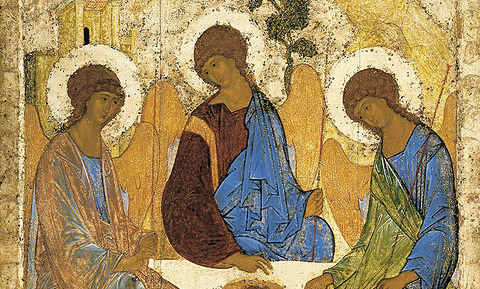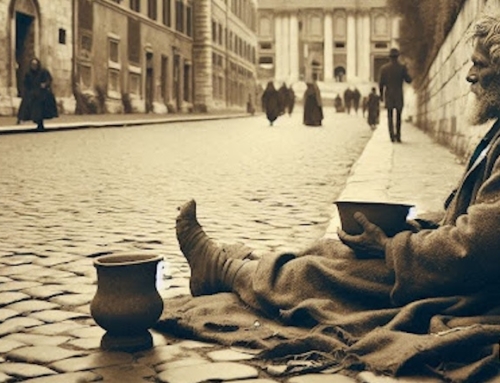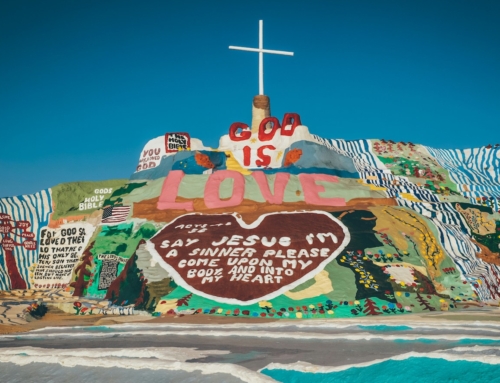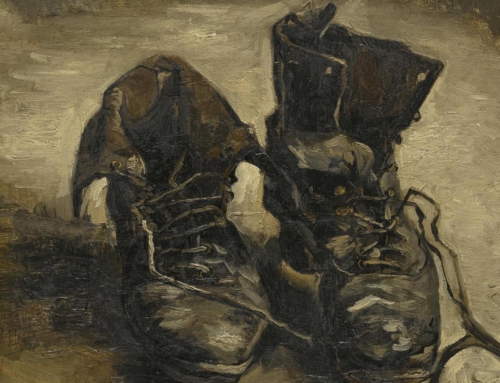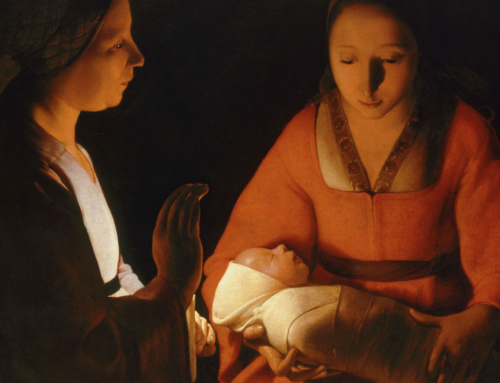In 1988, the Russian Orthodox Church “glorified” (the formal process of canonization in the East) the celebrated iconographer, Andrei Rublev (c. 1360-1430; feast day, January 29 or July 4). Little is known about his life, and still less is known about the breadth of his work as an iconographer. During the eighteenth and nineteenth centuries, when his name had become almost synonymous with Russian iconography, some well-meaning and pious souls attributed numerous icons to his hand, conflating the historical record and sullying any hope of reconstructing an accurate corpus. Since this unhappy occurrence, scholars have argued for the attribution of particular icons to Rublev, including an assortment of saints and angels from Dormition Cathedral in Vladimir, Russia. At the turn of the twentieth century, however, scholars attributed only one icon to Rublev with absolute certainty. The latter icon is widely considered the greatest accomplishment of Russian iconography; copies of the work adorn the homes and churches of Orthodox, Catholic, and Protestant Christians alike. The familiar icon is depicted above and is known by its pithy title, The Trinity.
The cult of Rublev is perhaps best explained by the cult of our very own Dominican, Fra Angelico. Rublev and Fra Angelico lived in the fourteenth and fifteenth centuries, respectively. The cause for Rublev, which remained dormant for centuries, was realized in 1988 during the celebration of the Millennium of the Baptism of Rus’ (otherwise known as the 1000th Anniversary of the Christianization of Rus’). The cause for Fra Angelico, which also remained dormant for centuries (much to the chagrin of Dominicans everywhere), moved forward in 1982 when Pope John Paul II proclaimed his beatification and approved his cult for the universal Church. The historical proximity of their glorification/canonization is extraordinary, if not providential.
Of Fra Angelico we can assuredly say that he is and was deserving of beatification. He lived the ascetic life of a Dominican friar; he followed the prescriptions of the Order in ministering to the poor; the perfect integrity of his life became well-known throughout Italy. Each of his many paintings dealt with the divine, and each ostensibly came as a result of spiritual inspiration. In the absence of miracles, Pope John Paul II remarked at his beatification ceremony, “Why do we need miracles? These [his paintings] are his miracles.” The same may be (and is!) said of Rublev in the East, even if his corpus is open for debate or remains incomplete. He lived the harsh life of an Orthodox monk; he followed the way of the desert fathers; he pursued the heights of contemplation and dwelt with God in the inner sanctum of his heart. What Pope John Paul II said of Fra Angelico equally applies to Andrei Rublev: “Why do we need miracles? This [his painting] is his miracle.”
And indeed, it is. In his homily on the Solemnity of the Most Holy Trinity in 2004, then-Cardinal Joseph Ratzinger offered the highest praise for the icon:
The most beautiful artistic depiction of this mystery [the Trinity] was left to us by Andrei Rublev in the fifteenth century: the world-renowned icon of the Trinity. Of course, it does not portray the eternal mystery of God in himself, who would dare to do that?
Instead, Rublev wrote the icon as a means for contemplation. It remains, for you and for me, an artistic masterpiece—one that reveals the richness of the iconographer’s contemplative life and communion with the divine. In the words of Ratzinger:
These elements [of the icon] show us the mystery of God, allow us to immerse ourselves in the contemplation of its intimate depths, in his Trinitarian love. This is the God that we celebrate. This is the God who gives us joy. He is the true hope of our world. Amen.
✠
Image: Andrei Rublev, The Trinity

